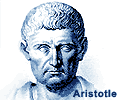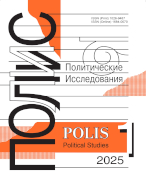Revolutionary Waves of the Second Half of the 20th Century:
an Interplay between Geopolitics, Violence, and Legitimacy
Rozov N.S.,
Professor, Principal Researcher, Institute for Philosophy and Law (Siberian Branch of the Russian Academy of Sciences); Head of Department for Social Philosophy and Political Science, Novosibirsk State University (NSU); Professor, Novosibirsk State Technical University, nrozov@gmail.com
elibrary_id: 72298 | ORCID: 0000-0003-2362-541X | RESEARCHER_ID: K-5447-2017
Pustovoit Yu.A.,
Associate Professor, Department of Political Science and Technology, Siberian Institute of Management (Novosibirsk, The Branch of the Russian Presidential Academy of National Economy and Public Administration), pustovoit1963@gmail.com
elibrary_id: 416812 | ORCID: 0000-0002-0934-2723 | RESEARCHER_ID: T-2766-2019
Filippov S.I.,
Deputy Director of the Institute for the Humanities of Novosibirsk State University (NSU), filippov.nsu@gmail.com
elibrary_id: 113556 |
Tsygankov V.V.,
Associate Professor, Specialized Educational-Scientific Center of the Novosibirsk State University (NSU), oktava-77@yandex.ru
elibrary_id: 542658 |
DOI: 10.17976/jpps/2019.02.03
Rozov N.S., Pustovoit Yu.A., Filippov S.I., Tsygankov V.V. Revolutionary Waves of the Second Half of the 20th Century: an Interplay between Geopolitics, Violence, and Legitimacy. – Polis. Political Studies. 2019. No. 2. https://doi.org/10.17976/jpps/2019.02.03
Revolutionary waves that unite successive interrelated revolutions represent macro-political wholes, which, on the one hand, have their own patterns of dynamics; on the other hand, they are included in regional and world processes. The article presents the conceptual framework of the approach, the main hypotheses about the dynamics of the revolutionary waves in these aspects, as well as the reasons for the characteristics of several waves of the second half of the 20th century: in Africa and the Caribbean Gulf approx. 1960, in Southeast Asia, 1950-1960s, in Central Europe in the late 1980s. Waves are influenced by geopolitical tensions, ideological trends, but they themselves change geopolitics, geo-economics, geo-culture on the corresponding continent or even in the whole world. Individual revolutions in each wave and the waves themselves are characterized by very different levels of violence. Sometimes they are affected by civil and/or international wars; sometimes they are rather peaceful. Post-revolutionary regimes are recognized to varying degrees by opposing coalitions of powers as well as by global international organizations. This is always connected with positions in ideological struggle, with political and military support, as well as with the scale of homicide, and (non)justification of the admitted violence. Thus, geopolitics, violence and legitimacy of revolutionary waves constitute a single dynamic complex with regularities that are revealed on the historical data mentioned above
References
Arrighi G., Silver B.J. 1999. Chaos and Governance in the Modern World System. Minneapolis: University of Minnesota Press. 348 p.
Beck C.J. 2011. The World-Cultural Origins of Revolutionary Waves Five Centuries of European Contention. – Social Science History. Vol. 35. No. 2. P. 167-207. https://doi.org/10.1215/01455532-2010-020
Beck C.J. 2015. Radicals, Revolutionaries, and Terrorists. (Social Movements). Malden, MA: Polity Press. 208 p.
Beissinger M.R. 2007. Structure and Example in Modular Political Phenomena: The Diffusion of Bulldozer/Rose/Orange/Tulip Revolutions. – Perspectives on Politics. Vol. 5. No. 2. P. 259-276. https://doi.org/10.1017/S1537592707070776
Boswell T., Dixon W.J. 1990. Dependency and Rebellion: A Cross-national Analysis. – American Sociological Review. Vol. 55. No. 4. P. 540-559. https://doi.org/10.2307/2095806
Katz M.N. 1999. Revolutions and Revolutionary Waves. New York: Palgrave Macmillan. 192 p.
Stephan M.J., Chenoweth E. 2008. Why Civil Resistance Works: The Strategic Logic of Nonviolent Conflict. – International Security. Vol. 33. No. 1. P. 7-44.
Tilly Ch. 2003. The Politics of Collective Violence. Cambridge: Cambridge University Press. 290 p.
Ash T.G. 2009. 1989!; Velvet Revolution: The Prospect. (Russ. ed.: Ash T.G. 1989 god i perspektivy “barkhatnykh revolyutsii”. – Pro et Contra. No. 5-6. P. 116-136.)
Collins R. 2015. Macrohistory: Essays in Sociology of the Long Run. (Russ. ed.: Collins R. 2015. Makroistoriya: ocherki sotsiologii bol’shoi dlitel’nosti. Moscow: URSS; LENAND. 504 p.)
Filippov S.I. 2017. Usloviya revolyutsionnosti elit: makroistoricheskii analiz [Conditions of the Revolutionism of Elites: A Macro-Historical Analysis]. – Revolyutsiya i evolyutsiya: modeli razvitiya v nauke, kul’ture, sotsiume: sbornik nauchnykh statei [Revolution and Evolution: Development Models in Science, Culture, Society: a Collection of Scientific Articles. Ed. by I.T. Kasavin, A.M. Feygelman]. Nizhny Novgorod:
Publishing House of the N.I. Lobachevsky Nizhny Novgorod State University. P. 319-321. (In Russ.)
Glazunov E.P., Isaev M.P. 1984. Strany Indokitaya: put’ bor’by i svershenii [Countries of Indochina: the Path of Struggle and Achievements]. Moscow: Mysl’ Publishers. 171 p. (In Russ.)
Goldstone J. 2006. Towards a Fourth Generation of Revolutionary Theory. (Russ. ed.: Goldstone J. K teorii revolyucii chetvertogo pokoleniya. – Logos. No. 5. Vol. 56. P. 58-103).
Goldstone J. 2015. Revolutions: A Very Short Introduction. (Russ. ed.: Goldstone J. Revolyutsii. Ochen’kratkoe vvedenie. Moscow: Izdatel’stvo Instituta Gaidara. 192 p.)
Istoriya antikommunisticheskikh revolyutsii kontsa XX veka: Tsentral’naya i Yugo-Vostochnaya Evropa [The History of the Anticommunist Revolutions of the End of the 20th Century: Central and Southeastern Europe. Ed. by Yu.S. Novopashin]. 2007. Moscow: Nauka Publishers. 402 p. (In Russ.)
Istoria Romaniei. Compediu (Coordonatori loan-Aurel Pop, loan Bolovan). 2005. (Russ. ed.: Istoriya Rumynii. Moscow: Ves’ mir Publishers. 680 p.)
Korolev Yu.N., Kudachkin M.F. 1986. Latinskaya Amerika: revolyutsii XX veka [Latin America: the Revolution of the Twentieth Century]. Moscow: Politizdat Publishers. 350 p. (In Russ.)
Korotayev A.V., Isayev L.M., Vasiliev А.М. 2015. Quantitative Analysis of 2013-2014 Revolutionary Wave. – Sotsiologicheskie issledovaniya. No. 8. P. 119-127. (In Russ.)
Mann M. 2018. The Sources of Social Power. Vol. 4: Globalizations, 1945-2011. (Russ. ed.: Mann M. Istochniki sotsial’noi vlasti: v 4 tomakh. Vol. 4. Globalizatsii, 1945-2011. Moscow: Delo RANKhiGS Publisher House. 672 p.)
Mar’ina V.V. 2008. Prazhskaya vesna 1968 godu. K voprosu o mezhdunarodnom rezonanse (po opublikovannym v Cheshskoi Respubliki dokumentam i materialam cheshskogo zhurnala “Soudobe dejiny”) [The Prague Spring of 1968. On the Issue of International Resonance (Based on Documents and Materials from the Czech Magazine “Soudobe dejiny” Published in the Czech Republic)]. – Slavyanoveden’e. No. 3. P. 22-39. (In Russ.)
Murashko G.P., Dzhalilov T.A. 2008. “Prazhskaya vesna” i pozitsiya zapadnoevropeiskikh kompartii [“Prague Spring” and the Position of the Western European Communist Parties]. – Voprosy istorii. No. 11. P. 1-23. (In Russ.)
O prichinakh Russkoi revolyutsii [On the Causes of the Russian Revolution. Ed. by. L.E. Grinin, A.V. Korotaev, S.Yu. Malkov]. 2010. Moscow: LKI Publishers. 432 p. (In Russ.)
Popov A.P. 2007. Politicheskie sistemy i politicheskie rezhimy v Kitae XX veka [Political Systems and Political Regimes in China of the 20th Century]. Moscow: Ekzamen Publishers. 286 p. (In Russ.)
Pustovoit Yu.A. 2017. Riot, Uprising, Revolution: Organized Violence of Citizens in the Context of Modernization Processes. – Bulletin of the Buryat State University. Economics and Management Series. No. 4. P. 71-81. (In Russ.)
Rozov N.S. 2016a. Tipologiya, kriterii vydeleniya i osnovy dinamiki revolyutsionnykh voln v mirovoi istorii [Typology, Selection Criteria and the Basis of the Dynamics of Revolutionary Waves in World History]. – Sistemnyi monitoring global’nykh i regional’nykh riskov. Ezhegodnik [System Monitoring of Global and Regional Risks. Yearbook. Ed. by L.E. Grinin, A.V. Korotaev, L.M. Isaev, K.V. Meshcherina]. Volgograd: Uchitel’ Publishers. P. 240-262. (In Russ.)
Rozov N.S. 2016b. Revolutionary Waves in World History: Dynamic Patterns of Growth and Extinction. – ECO Journal (Novosibirsk). No. 10. P. 78-95. (In Russ.)
Rozov N.S. 2017. Crisis and Revolutions: Fields of Interaction, Actors’ Strategies, and Trajectories of Conflict Dynamics. – Polis. Political Studies. No. 6. P. 92-108. (In Russ.) https://doi.org/10.17976/jpps/2017.06.07
Skocpol T. 2017. States and Social Revolutions: A Comparative Analysis of France, Russia, and China. (Russ. ed.: Skocpol T. Gosudarstva i sotsial’nye revolyutsii: sravnitel’nyi analiz Frantsii, Rossii i Kitaya. Moscow: Izdatel’stvo Instituta Gaidara. 552 p.)
Tsirel’ S.V. 2011. Revolyutsionnye situatsii, revolyutsii I volny revolyutsij: usloviya, zakonomernosti, primery [A Revolutionary Situation, the Revolution and the Wave of Revolutions: the Conditions, Patterns, Examples]. – Oikumen (Kharkov, Ukraine). No. 8. P. 174-209. (In Russ.)
Tsygankov V.V. 2016. Tipy Revolyutsionnykh voln (na materiale istorii Rannego Moderna) [Types of Revolutionary Waves (on the Material of the History of the Early Modern)]. – Sistemnyi monitoring global’nykh i regional’nykh riskov. Ezhegodnik [System Monitoring of Global and Regional Risks. Yearbook. Ed. by L.E. Grinin, A.V. Korotaev, L.M. Isaev, K.V. Meshcherina]. Volgograd: Uchitel’ Publishers. P. 263-281. (In Russ.)
Ulunyan A.A. 2013. Balkanskii “shchit sotsializma”. Oboronnaya politika Albanii, Bolgarii, Rumynii i ugoslavii
(seredina 50-kh godov – 1980 god) [Balkan “Shield of Socialism”. The Defense Policy of Albania, Bulgaria, Romania and Yugoslavia (mid-50s – 1980)]. Moscow: Russkii Fond Sodeistviya Obrazovaniyu i Nauke. 912 p. (In Russ.)
Vooruzhennaya bor’ba narodov Azii za svobodu i nezavisimost’. 1945-1980 [The Armed Struggle of the Peoples of Asia for Freedom and Independence. 1945-1980]. 1984. Moscow: Nauka Publishers. 341 p. (In Russ.)
Wallerstein I. 2001. World-Systems Analysis and the Modern World Situation. (Russ. ed.: Wallerstein I. Analiz mirovykh sistem i situatsiya v sovremennom mire. Saint Petersburg: Universitetskaya kniga. 416 p.)
See also:
Nisnevich Yu.A., Ryabov A.V.,
Modern Authoritarianism and Political Ideology. – Polis. Political Studies. 2016. No4
Rozov N.S.,
Crisis and Revolutions: Fields of Interaction, Actors’ Strategies, and Trajectories of Conflict Dynamics. – Polis. Political Studies. 2017. No6
Goldstone J.A., Grinin L.Ye., Korotayev A.V.,
Waves of revolutions in the 21st century. – Polis. Political Studies. 2022. No4
Rozov N.S.,
The Vector of Russian 1917 Revolution: Modernization or Counter-Modernization?. – Polis. Political Studies. 2017. No2
Pantin I.K.,
To the question of the character of the October revolution. – Polis. Political Studies. 2013. No6





.jpg)






 print
print
.jpg)
.jpg)